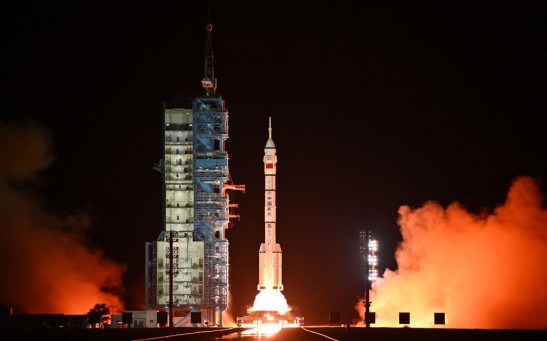SPACE

'Halloween Comet' Breaks Apart Just in Time for Halloween, Caught by NASA's Solar Observatory

Why Astronauts Face Physical Challenges Upon Returning to Earth

Exploring Life Beyond Earth: Study Claims Other Planets Could Be Suitable for Alien Life

Chandra Observations Reveal Dangerous Areas for Planetary Development Near Massive Stars

NASA Shuts Down Voyager 2 Science Instrument After 47 Years to Conserve Energy

Martian Ice May Support Microbial Life Beneath Its Surface, New Study Suggests

NASA Astronaut Hospitalized After Returning from Extended Space Mission

Deep Blue Aerospace Unveils Plans for Unforgettable Space Tourism Experience

First Black Hole Triple System Discovered by Astronomers at MIT

New NASA Telescope Prototypes Could Help Explore the Universe's Origins

SpaceX Successfully Launches Eutelsat OneWeb Satellites for European Internet Provider
US Space Force Partners with SpaceX, Awarding $733.6 Million for National Security Missions

Two Brown Dwarfs in Close Orbit Around Star Spotted by Astronomers Using New Telescopes

Meteorites on Earth Traced Back to Parent Bodies in Space
Most Popular

How Technology Is Changing the Real Estate Industry?

How a Plant-Based Diet Can Protect Against Breast Cancer: Insights from Nutrition Research

Study Reveals High Turnover in Scientific Research Careers: What This Means for Future Scientists

Why It's So Difficult to Lose Weight: The Biological Explanation Behind Obesity






